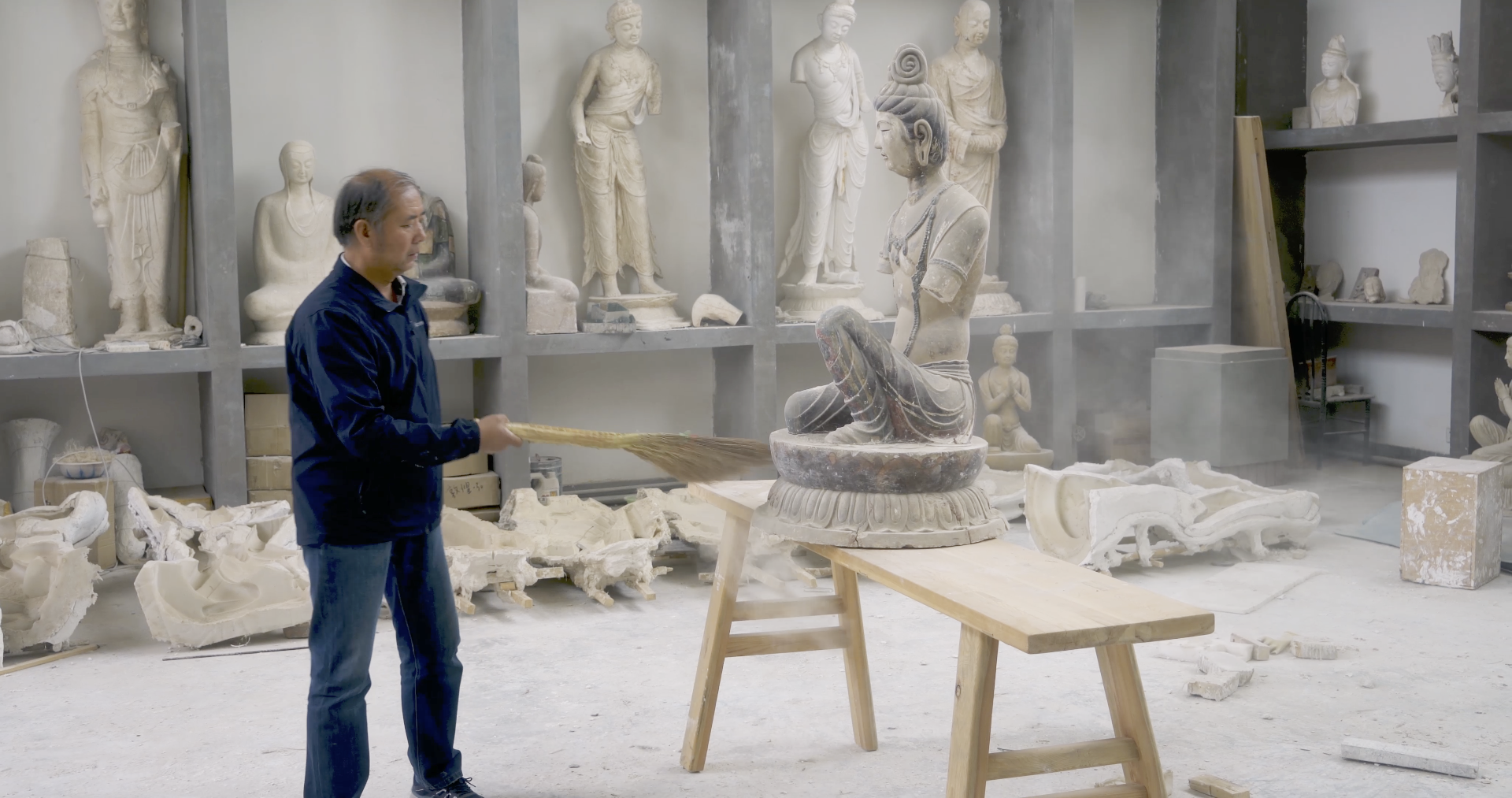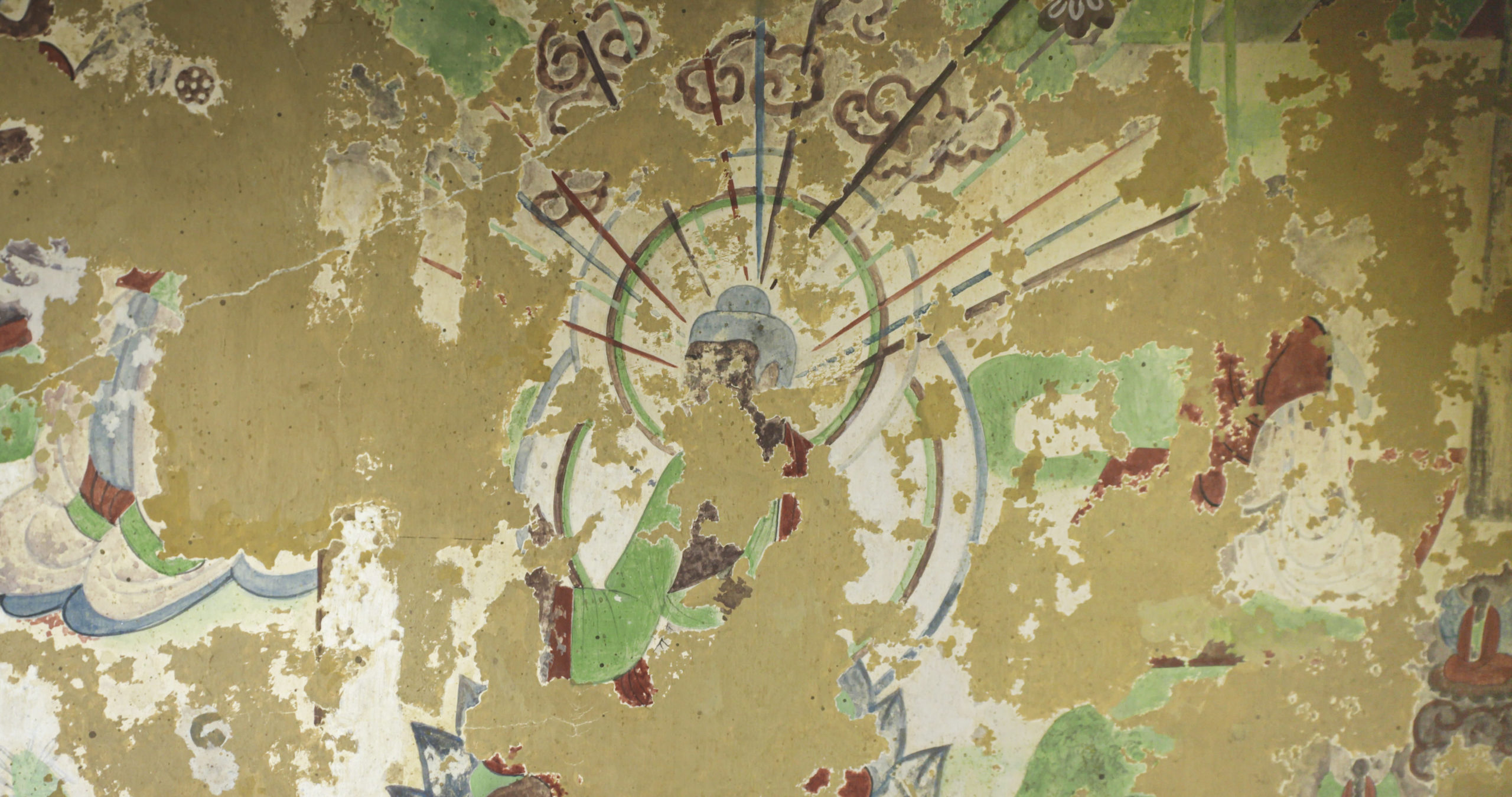Culture Stock
Two thousand years ago, the Chinese and Greeks had nearly identical terms to describe the abstract character of money: the Greeks used the word symbolon (symbol) and the Chinese used the term fú hào (symbol or tally). Symbola were everyday objects like a plate, a bone, or a ring chosen to represent an agreement between friends. They were broken in two, and each party took half to remind them of their promise. Bamboo tally sticks in China were similar: a piece of wood was notched to mark an agreement, then split in half; the half recorded the debt, could be exchanged, and retained its value. Thus, money was born.
Like symbola, and tally sticks, photographs split the world in two, rending reality from its image and marking a relationship of inequality. And, like money, photographs are duplicates. Once the photograph is taken, it is unhinged from its subject, and becomes a symbol in circulation. It might be used to promote government policies, market financial instruments, or sell insurance. But cameras are far from immaterial; they are composed of at least sixty-four different minerals mined around the world. Wherever a photograph is being taken, somewhere else there is a hole in the ground and the people who dug it.
More and more we occupy ourselves with the replica instead of the original. When I traveled to the Buddhist caves in Dunhuang, China, in 2018, I was examining this idea of the similarities between money and photographs. It helped me to consider how China is using its cultural heritage to promote its new global infrastructure program, the Belt and Road Initiative. The Belt and Road Initiative is a neocolonial finance program, not unlike the World Bank or the International Monetary Fund, that lends money to partner countries in Eurasia and Africa. Its object is to develop new markets, allowing the Chinese economy to continue to grow.
When China’s president, Xi Jinping, refers to the Belt and Road Initiative as the “new Silk Road,” archeological sites like Dunhuang with their medieval histories of connectivity, cultural exchange, and international trade are instrumentalized for the nation’s public relations campaign. The Belt and Road Initiative finances infrastructure like roads, railways, and shipping terminals, but it also funds archeological projects, so its partners, too, might promote their ‘Silk Road’ histories, further amplifying China’s development narrative.
Dunhuang’s Mogao Grotto is a medieval temple site of nearly seven hundred caves carved into a sandstone cliff at the edge of the Taklamakan Desert. Construction on the cave temples began in 366AD when Dunhuang was an important outpost on the Silk Road and gateway to the West. For centuries it was a center for Buddhist learning and worship. Wealthy merchant families sponsored monks to build the caves and decorate them with elaborate murals and sculptures depicting Buddhist sutras. I traveled there with my partner, who was invited for an artist residency sponsored by the Dunhuang Foundation. During our introduction a researcher showed us their ultra-high-resolution, digital camera, gifted by Microsoft and used to scan the caves for conservation purposes. The donation reminded me of the ambitions of Corbis, the first digital stock image agency, founded by Bill Gates in 1989:
The range of the company’s visual content attempts to encompass the breadth of civilization, containing everything from reproductions of cave paintings to contemporary celebrity photographs.
Through aggressive acquisitions of archives and stock agencies, from the photographs of Ansel Adams and Andy Warhol to France’s Sygma Photo News and the Library of Congress, Corbis soon possessed well over one hundred million images. In an effort to preserve its investment, the company moved this collection to Iron Mountain, a disused limestone mine north of Pittsburgh. Stored at subzero temperatures, Corbis’s physical archive is expected to survive for at least five thousand years. The move to a rural cave in Pennsylvania upset many editors and researchers, and illustrates that the value for Corbis lay not in the aura of the original but the accessibility of the copy. In 2016, Gates sold Corbis to the Chinese media company Unity Glory International for an undisclosed amount, and that company immediately licensed the images to Corbis’s competitor, Getty Images.
Photography is no longer permitted in the Mogao caves; the murals and sculptures are too sensitive to light, and so the Dunhuang Academy’s tour guides lead groups through by flashlight, wearing robes inspired by Tang dynasty fashion. In order to get a closer look at the caves, you must visit their replicas in the Dunhuang Museum. These are painted with an almost absurd fidelity to the originals: each scratch, stain, graffiti, or void is painstakingly fauxed to forensic precision, resulting in representational painting that borders on abstraction.
Inside the academy’s sculpture studio, I met a young, classically trained sculptor, Fu Xingbao, working on a clay model of a Buddha from Cave 328. In 1924, the Harvard art historian Langdon Warner infamously stole a Tang-era Buddha sculpture from the same cave during his “collecting” expedition for the Fogg Museum. Inspired by Microsoft’s gifted camera and Fu Xingbao’s expert copying, I decided to make a 3D scan of a replica, the twin of the Buddha that Langdon Warner stole. Perhaps I could animate this contentious cultural object and let it speak for itself.
A year later, in 2019, I traveled to Baotou, Inner Mongolia, to visit the rare earth element mines and make photographs. This was during the ongoing US-China trade war, when the Chinese Communist Party had put an end to Xi Jinping’s term limits while continuing a nationwide anti-corruption campaign. The government was also cracking down on Hui and Uyghur Muslim minority populations in Xinjiang and Gansu, frontier territories similar to Inner Mongolia, rich in natural resources. Multiculturalism is essential to China’s national identity and yet treated as a challenge to its authority. Rare earth elements are a group of minerals that are essential ingredients in most consumer electronics (like smartphones, digital cameras, and batteries), as well as in electric cars and wind turbines. As China strives to become a self-sufficient advanced economy, strategic resources like rare earth become highly politicized; my cousin has family in Inner Mongolia who offered to help me, but when they learned what my subject was they rescinded the offer. To avoid potential censorship, I chose to represent the story of rare earth elements through the commercial genre of lifestyle stock photography.
Through the 1980s the United States produced seventy percent of the world’s supply of rare earth elements — all at Mountain Pass, California. The mine is situated just off Interstate 15 on the way from Los Angeles to Las Vegas. Traditional processing of the minerals produces toxic slurries of thorium, uranium, lead, and arsenic that continue to poison the environment, a toxicity that connects Mountain Pass to Baotou. Edward Nixon, kid brother of Richard Nixon, suggested the president should create the Environmental Protection Agency in 1972, and then proceeded to profit from it. When environmental fines and lawsuits threatened to bankrupt Mountain Pass, he advised the mine to ship their unprocessed ore to Baotou, where people in Inner Mongolia would deal with the environmental liability. Multimillion-dollar lawsuits, fines, and stiff competition from Baotou eventually led Mountain Pass mine into bankruptcy. In 2017, it was revived by investors, who also ship the ore to Baotou; they claim Mountain Pass will soon be environmentally sound and self-sufficient.
Inner Mongolia wasn’t wholly incorporated into China until the fifties, when Mao Zedong developed it into a military-industrial region for the nation. Through miscegenation and land expropriation the Mongolian ethnic region fell under the control of China and is now predominately Han Chinese. Many factories and businesses in Baotou are owned by people from other provinces; a taxi driver explained to me, “Local people earn very little, while people from the South are running the businesses. The place belongs to us, but we are only workers, employees for people from southern provinces.”
I grew up in western United States mining country, Colorado and Wyoming. My father worked for a construction equipment and steel company in Casper, Wyoming, renting and selling mining parts to nearby coal and uranium mines. In the eighties, Casper was not unlike Baotou today, albeit more modest in scale, population, and economy. The state once had a substantial Indigenous population; mostly eliminated by forced migration and genocide, Indigenous Americans now amount to just two percent of the population. One night I was woken by my father and driven to see a freight train wreck. Yellow flood lights illuminated a line of tipped hopper cars, their contents spilled on the tracks. Our lives in rural Wyoming enmeshed in extraction meant that, occasionally, industrial accidents were harrowing entertainment.
Both Casper and Baotou are historically poor frontier sites that possess minerals of geopolitical importance controlled by private owners from outside the state. The United States, of course, is no stranger to clashes over resource rights and Indigenous autonomy. North Dakota’s Standing Rock Sioux and their allies were harassed and arrested en masse in 2017, by private security forces hired by Energy Transfer Partners, the Texas-based corporation building an oil pipeline over their land and water.
Stock photography images are latent and undeveloped, waiting in digital archives for a client to find a purpose for them. In this way stock photography agencies are like mining companies, extracting raw material, molding it into commercial products, and bestowing it with an exchange value. Yet even this intentionally generic, commercial genre inevitably reflects shifting societal preoccupations and values. In the early nineties, I worked in a commercial studio in New York making photos for Toys “R” Us. I constructed artificial nurseries, lighting them with banks of strobe lights in preparation for a parade of baby models comprising a gamut of ethnicities. Growing corporate attention to diversity at the time felt really promising — as well as calculated and transactional.
While meeting with a local photographer in Baotou I relayed to him some locations and models I was looking for: an electric car dealership, a new middle class gated housing development, a modern architect’s studio, a Mongolian child to hold a sheep, a mature Mongolian man to sit working on a laptop in a field. The photographer was puzzled by why I thought that these images would show the reality of Inner Mongolia and the rare earth element industry. After all, he said, “real Baotou people don’t look like models, and they don’t drive electric cars.”
Not realism, but aspiration. If his reaction was indicative of how my pictures will be received then perhaps my intentions are effective — my photographs comment on the realities in Baotou and its rare earth mining industry by not showing the sacrifices it has made to its environment and public health. It’s as though they inhabit a blind spot, not unlike the reproductions of Tang dynasty Buddhist caves in Dunhuang, which on the surface represent the height of Chinese culture but in fact are used to promote the expansionist development projects of authoritarian capitalism. Could images of clean, affordable wind power, and harmonious communities driving electric cars, represent the future success of the Belt and Road Initiative? Only in pictures.
What could be a more insidiously benign form of imagery? A family sits down to enjoy a meal together in their newly decorated apartment. A soldier returns home for the holidays. An engineer tunes the efficiency of a new wind farm. These illustrations speak in a commercial marketing language about progress toward a better society where prosperity is the norm, and old problems of civil strife and ecological damage have been eliminated.
When I returned to Los Angeles from Baotou, I licensed my photographs to a Getty Images app called iStock so they can circulate in the network of commerce they represent. They are selling steadily, finding new uses beyond my expectations. I recently uploaded one image as a trojan horse, seeking to surreptitiously break the fourth wall. A professional woman in a red dress writes her design thoughts on a glass office wall. The message, written in Inner Mongolian script, contains the last lines of the 1954 film Salt of the Earth. The censored, McCarthy-era film dramatized the struggle of Mexican miners organizing for equal wages and safety in a New Mexico zinc mine. An Inner Mongolian reader may ascertain the slippage of the image from its presumed role as a mere corporate promotion.
Then I knew we had won something they
could never take away — something I
could leave to our children — and they,
the salt of the earth, would inherit it.
Notes
On fú hào, symbolon, and tally sticks, see The Middle Ages (600 AD-1450 AD), chapter 10 of David Graeber, Debt: The First 5,000 Years.
On heritage diplomacy with regard to China’s Belt and Road Initiative, see Tim Winter, Geopolitical Power: China’s Quest to Revive the Silk Roads for the Twenty-First Century.
On the histories of stock photography and Corbis, see Estelle Blaschke, Banking on Images: The Bettmann Archive and Corbis. Blaschke details the brief history of stock image banks, which anticipated the ubiquity of image culture on the internet.
On rare earth element mining histories and futures, see US geographer Julie Michelle Klinger, Rare Earth Frontiers: From Terrestrial Subsoils to Lunar Landscapes.
Salt of the Earth is a 1954 US film written by Michael Wilson, directed by Herbert J. Biberman, and produced by Paul Jarrico. All were blacklisted by the Hollywood establishment due to their alleged involvement in communist politics.




















